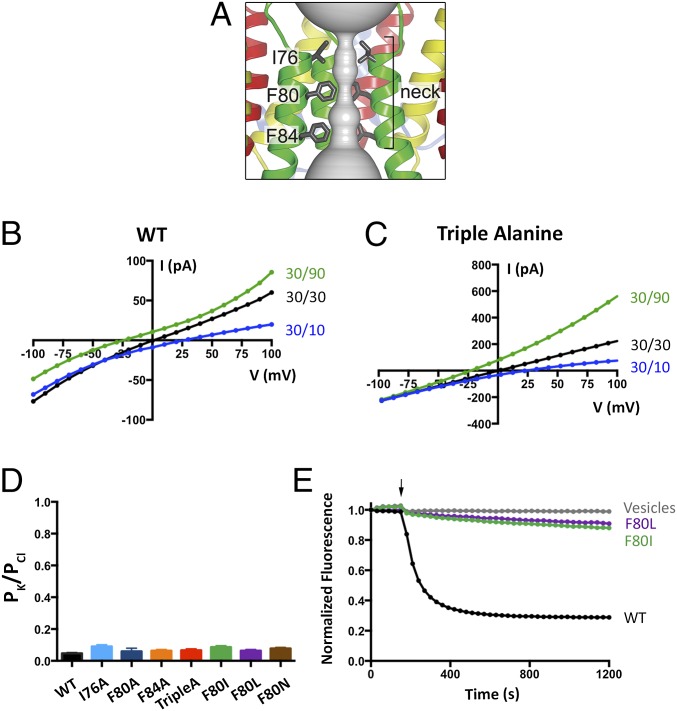Fig. 2.
Mutation of the neck does not affect anion-vs.-cation selectivity in BEST1. (A) Close-up view of the neck region of the pore (gray surface) of BEST1 (illustrated as in Fig. S1B) . (B and C) Mutation of amino acids in the neck does not noticeably shift reversal potentials. I–V relationships are shown for BEST1WT (B) and BEST1TripleA (C) recorded from −100- to +100-mV voltage steps under symmetric (black) and asymmetric (blue, green) KCl conditions using standard solutions. Labeled values (e.g., “30/90”) indicate the concentration of KCl (in millimolar) used for the cis/trans sides. (D) Permeability ratios (PK/PCl) for BEST1WT and neck mutants. Using reversal potentials measured from both 30/10 and 30/90 mM KCl conditions, the Goldman–Hodgkin–Katz voltage equation was solved (SI Extended Data Analysis) to compute an average PK/PCl permeability ratio per experiment: WT, 0.05 ± 0.01; I76A, 0.09 ± 0.01; F80A, 0.06 ± 0.03; F84A, 0.06 ± 0.01; TripleA, 0.07 ± 0.02; F80I, 0.09 ± 0.02; F80L, 0.06 ± 0.01; and F80N, 0.08 ± 0.01. Error bars denote the SEM from three separate experiments (using different bilayers). (E) Hydrophobic mutations at F80 reduce Cl− flux. Flux assay measurements for BEST1WT, BEST1F80I, and BEST1F80L, and for empty vesicles were made on the same day to compare channel activity. In this assay, a decrease in fluorescence is indicative of Cl− influx into liposomes. The arrow indicates when the assay was initiated by the addition of the proton ionophore CCCP (Methods).

